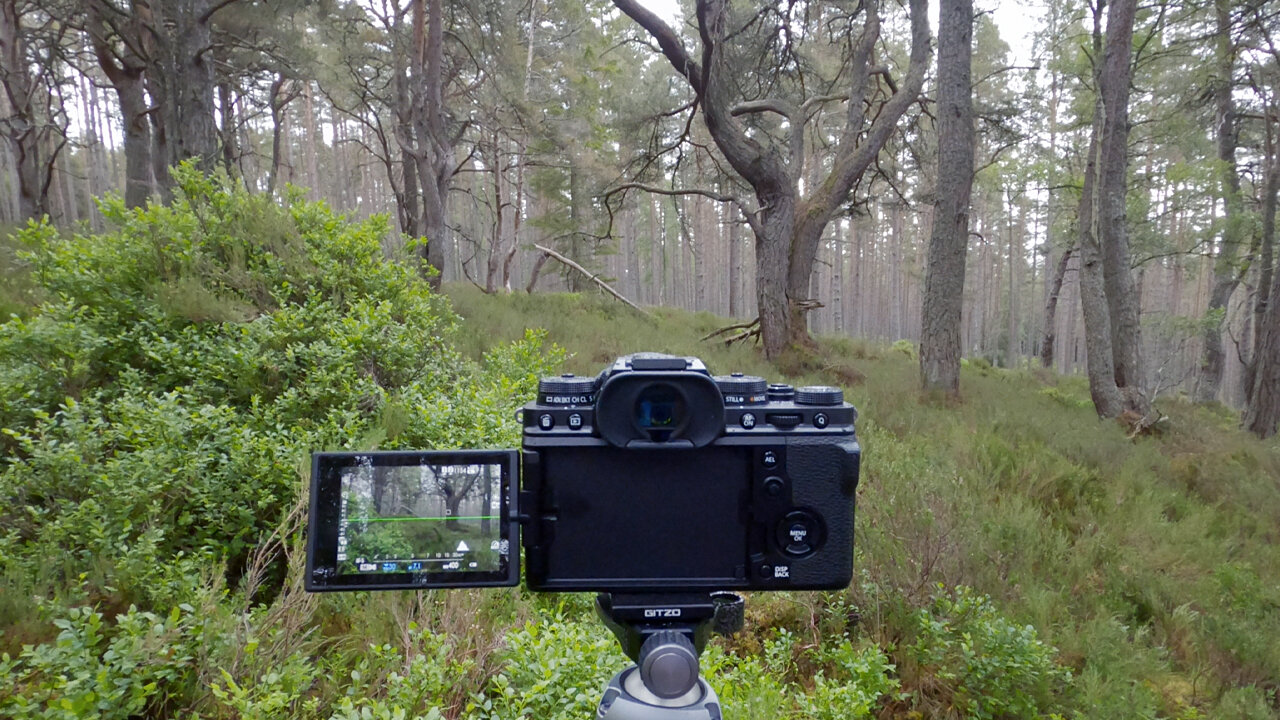As I write this article I have now owned my Fujifilm X-T4 for just over three months, I’ve used it a lot mainly for photography but also for creating video too. It seems like the perfect time to sum up my initial thoughts and experiences with the camera so let’s get started…
Out of the box the newer model still feels very well made but also feels more comfortable to hold in the hand due to subtle size and design changes. The familiar Fuji dials on top for changing ISO, shutter speed and exposure compensation are still present and I appreciate the new switch which enables me to change between shooting stills and video quickly and easily. A high degree of customisation is possible allowing the photographer to specify which action various button presses on the camera perform, and also actions can be assigned to swipe gestures on the rear screen.
The New Rear Screen
A new feature on the X-T4 which has proven divisive is the rear screen which is now fully articulating. I can definitely understand the mixed opinions on this…
My Fuji X-T4 with the new design rear screen
I really liked the screen design on the X-T3, I felt it was perfect for photography. However it is important to me that I am able to use my camera to record video too, and because some of that is recording myself it is a significant benefit to be able to see the screen and my composition, exposure etc. when I am facing the camera. With the X-T4 that is now possible. So for that reason alone I do prefer the new screen design over what was previously available on this line of Fuji cameras. In addition to this the screen itself is better, although I could not compare it side by side with the X-T3 I feel the higher resolution is making it easier for me to check my photographs are in focus and to see finer details when looking at a composition.
BUT it is not all perfect… A common problem with this design of screen is that their range of motion can be restricted when using a L bracket. Many landscape photographers use a L bracket and they work much better alongside the type of “tilt” screen found on the X-T3. As I write this a few companies are selling L brackets but I have not yet found a X-T4 specific one that is the ideal solution - manoeuvrability of the rear screen is restricted to some degree on all models. This is definitely a drawback and a frustration but not a fault of the camera itself. L bracket issues aside I really like the new screen for my needs.
IBIS (In Body Image Stabilisation)
Another new feature on the X-T4 that I am finding really useful is IBIS. As someone who spends most of his time capturing landscapes with my camera on a tripod I don’t think this is an essential feature, but I’ve definitely used and benefited from it over the last few months. I’ll continue to use my tripod the vast majority of the time but having IBIS has encouraged me to take a few more shots (when suitable) handheld. I have made a few videos on my YouTube channel Wayne Robertson Photography testing IBIS on the Fuji X-T4, and also one discussing how IBIS helped me in two ways to capture a specific photograph. Feel free to watch those to get a lot more information on this topic.
IBIS Videos:
Fuji X-T4 IBIS Test For Photography - How Good Is It?
Autofocus
I’m finding that autofocus on the Fuji X-T4 works very well for me when taking photographs but I would like to see a performance improvement when I’m in front of the camera recording video of myself. The X-T4 offers both face detection and eye detection which have the potential to be very useful for people like myself when recording video, however I find they are currently (at the time of writing) not working quite as well as I’d like. When using continuous autofocus the camera seems to have a tendency to occasionally lock onto a subject which is not a face or eye. Fuji has released a number of firmware updates for the X-T4 which appear to have improved the autofocus in this type of situation, and it’s certainly not bad, but if it could be improved just a little bit more I’d be delighted. As is it still performs well and the X-T4 is an excellent camera for producing high quality video.
Final Thoughts
Prior to purchasing the X-T4 I used the X-T3, the experience of using both cameras is very similar but I feel the X-T4 is definitely an improvement overall. How much of an improvement it is depends on your own individual needs but for mine (using it mainly for photographing landscapes and wildlife and video creation) it was definitely a worthwhile upgrade. I’ve been getting some great results when photographing wildlife (more of that to come in future videos on my YouTube channel) and the overall size and weight of the X-T4 partnered with a suitable lens makes it a great and manageable setup for wildlife photography.
Some Photographs I’ve Captured With My Fuji X-T4:
The improvement in battery life over the X-T3 is noticeable and very welcome. Although the sensor has not been upgraded for the X-T4, image quality when partnered with my Fuji lenses remains excellent and it takes photographs that I am very pleased with. I find the look and feel of Fuji cameras to be very welcoming and it makes them a pleasure to use and in that respect the X-T4 is no different - it is an excellent camera which helps produce fantastic photographs and video and lets us enjoy the experience while doing so.





